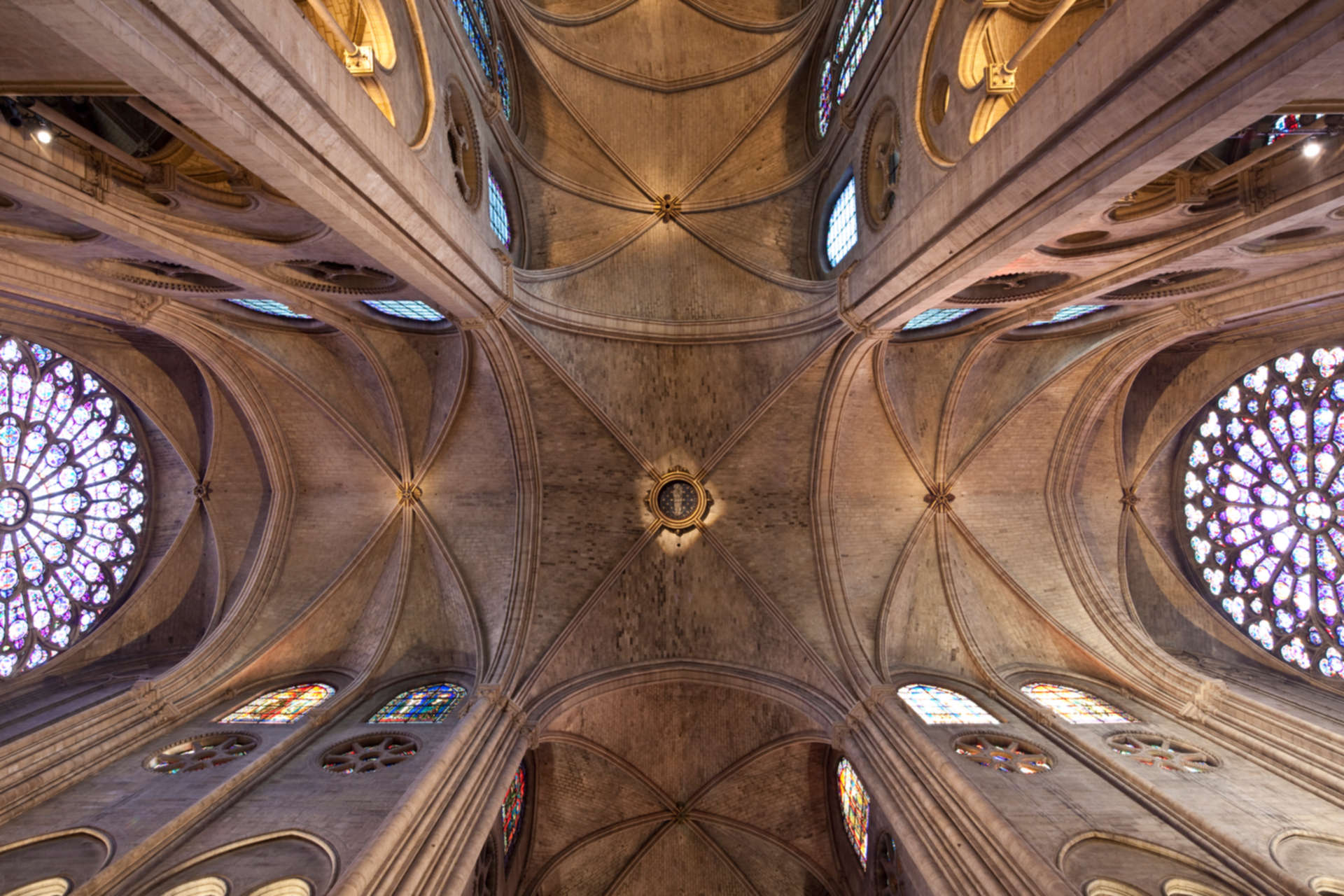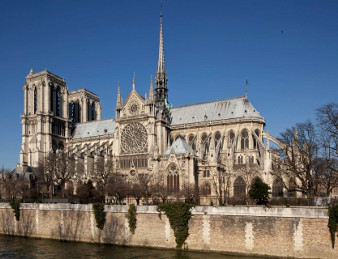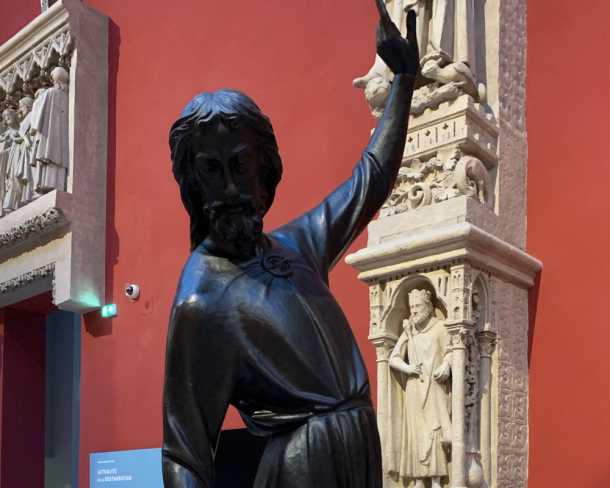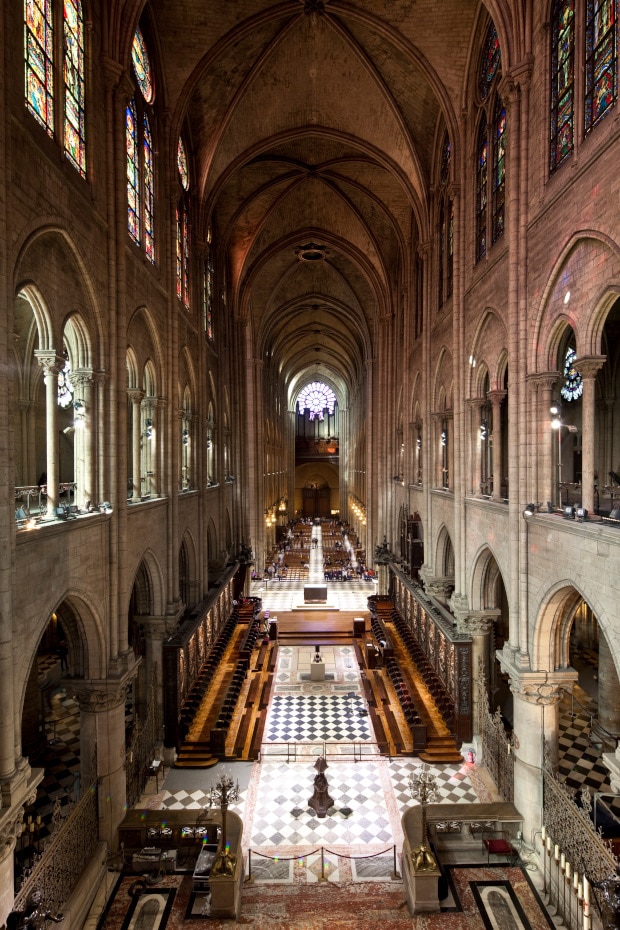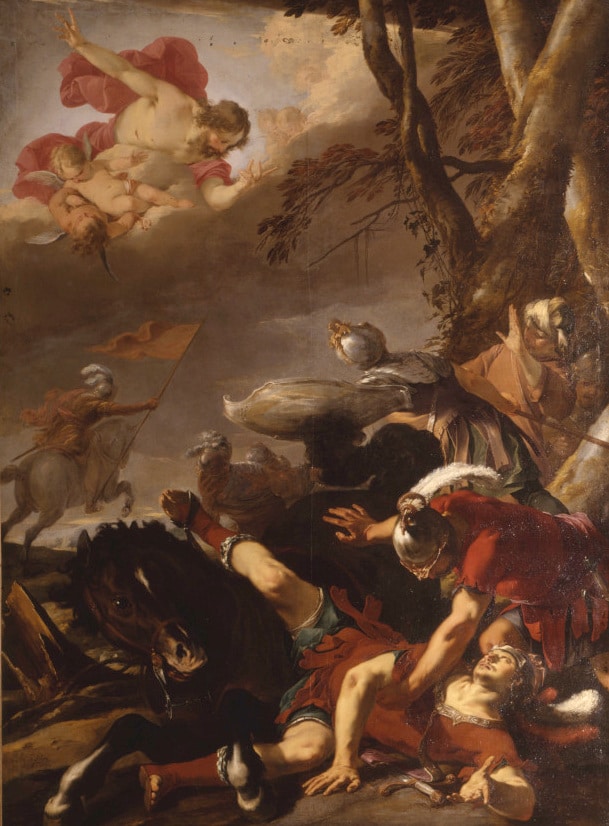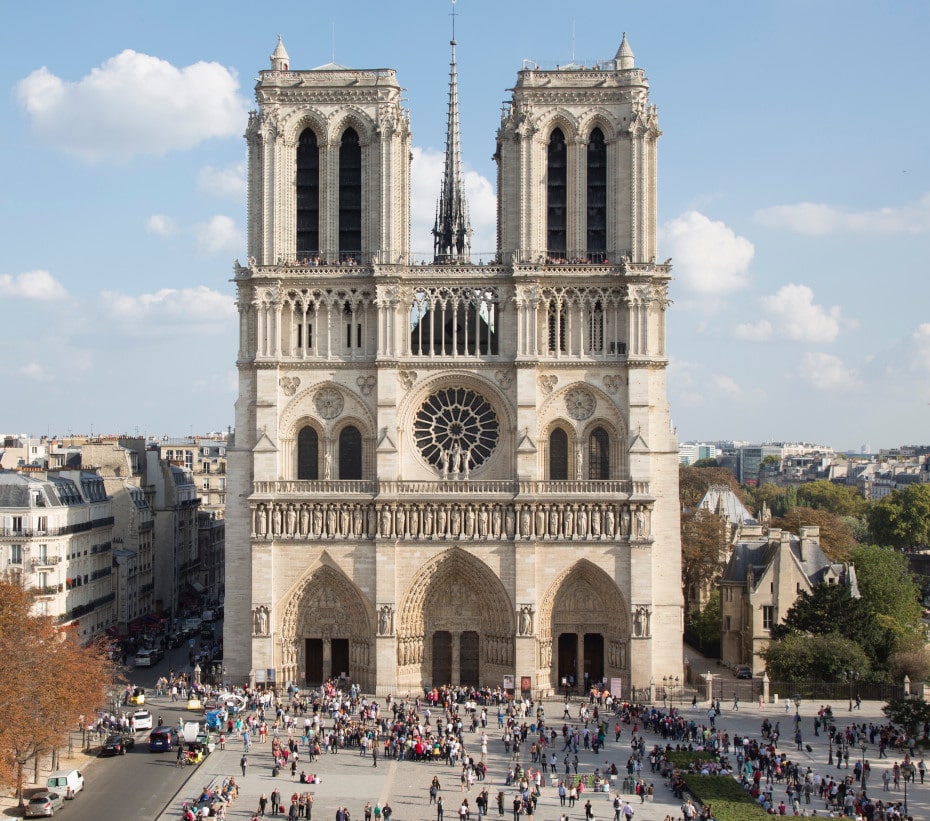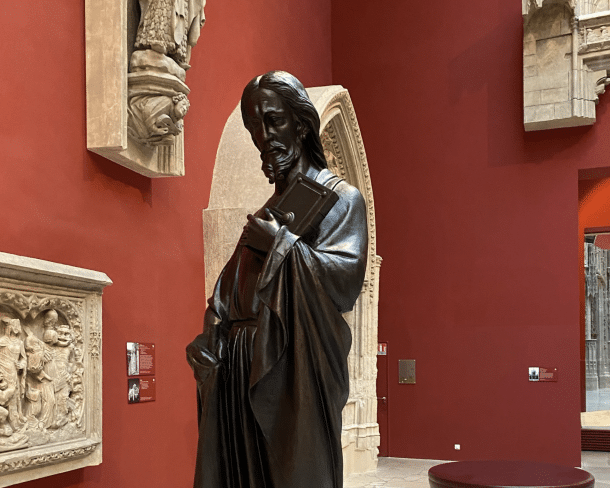Like in most churches, the plan of Notre-Dame Cathedral makes the form of a Latin cross. The transept forms the horizontal arm of the cross. The space at the intersection of the cross is called the transept crossing, and this is where liturgical celebrations take place. This volume is proportional to the dimensions of the cathedral. The two arms of the transept are also called braces.
In the 13th century, Pierre de Montreuil treated the walls of the lower part of the transept as exterior facades, placing a decorative system of arches, curves and friezes to reinforce the wall. The north rose window has retained its original 13th century stained-glass panes almost intact, while the south rose window, donated by Saint Louis, was extensively restored in the 19th century.
